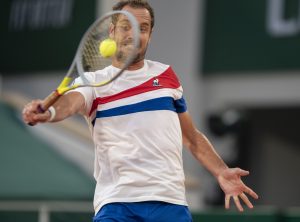It’s already been two years since Coco Gauff, then 15 years old, defeated Venus Williams in the first round of Wimbledon. She became youngest player to win a match in a major draw since Jennifer Capriati in 1991 and was the youngest qualifier in Wimbledon history.
Gauff announced herself to the tour so quickly that many fans have been expecting the upward trajectory to continue at lightning pace. It’s not quite been as fast as that but her trajectory certainly has been upwards.
Here’s how the 17-year-old phenom progressed last year.
Improvements to Serve
Gauff’s serve has definitely been her Achilles’ heel since she joined the tour. Like many younger players, she isn’t able to depend on it when matches get tight–in fact, in 2020, Gauff double faulted more often than almost everyone else on tour.
Though she still ranks among the Top 10 in terms of frequency of double faults, she has reduced her rate by over 3%, enough to significantly improve her second serve win percentage.
On any surface, we’ve seen how dangerous she can be when she was feeling confident.
- The first serve was devastating during the American hard-court swing, using it to ace her opponents frequently. The highlight of this period of the season was a quarterfinal showing in Montreal.
- On clay, she was very difficult to beat, using her first serve to full effect in spite of the slow surface. This led her to a title in Parma, a semifinal in Rome (albeit off a retirement from Barty) and a quarterfinal at Roland Garros.
- The second serve was stronger on all surfaces but she used it very effectively at Wimbledon. It took the efforts of the former-champ, Angelique Kerber, to put a stop to her.
Overall, plenty of improvements to the serve! However…
Still Erratic
The double faults are reducing… but they are still there. And when they started, they were difficult to stop. Though she had a brilliant clay season, losses to Karolina Pliskova and Ons Jabeur in Madrid and Charleston respectively were riddled with this problem.
Gauff also found other parts of her game unravelled when the pressure increased.
- Against Barbora Krejcikova at the French Open, the most important match of her season, Gauff held five set points in the first set but couldn’t convert any of them. Visibly distraught, Gauff went down 5-0 in the second set as her forehand deserted her. She sprung a late comeback in the second but it wasn’t enough as the Czech sealed the match 7-6 6-3.
- A very similar pattern played out in Rome, notably also on the surface she preferred this year. Against Swiatek, after dropping a very tight first set, Gauff’s backhand (normally the more solid of the two wings) started to spray errors. She went down 5-1 and couldn’t recover, losing the match 7-6 6-3.
In the two biggest matches of her season, Gauff let emotions get the better of her.
Early Days
There’s definitely room for improvement. Gauff is enjoying a career-high of #22 in the world, defeating plenty of decent players this year (Sabalenka, Mertens, Sakkari, Vondrousova, Jabeur, Alexandrova, Anisimova, Konta etc.!), but she certainly hasn’t peaked.
That’s what should be taken away from this article. Gauff won’t rest on her laurels on the outskirts of the Top 20–disappointments this year will be fuel for massive improvements as she’s still nowhere near maxing out her potential.
It’s easy to forget Coco Gauff’s career is only just beginning.
Main Photo from Getty.






